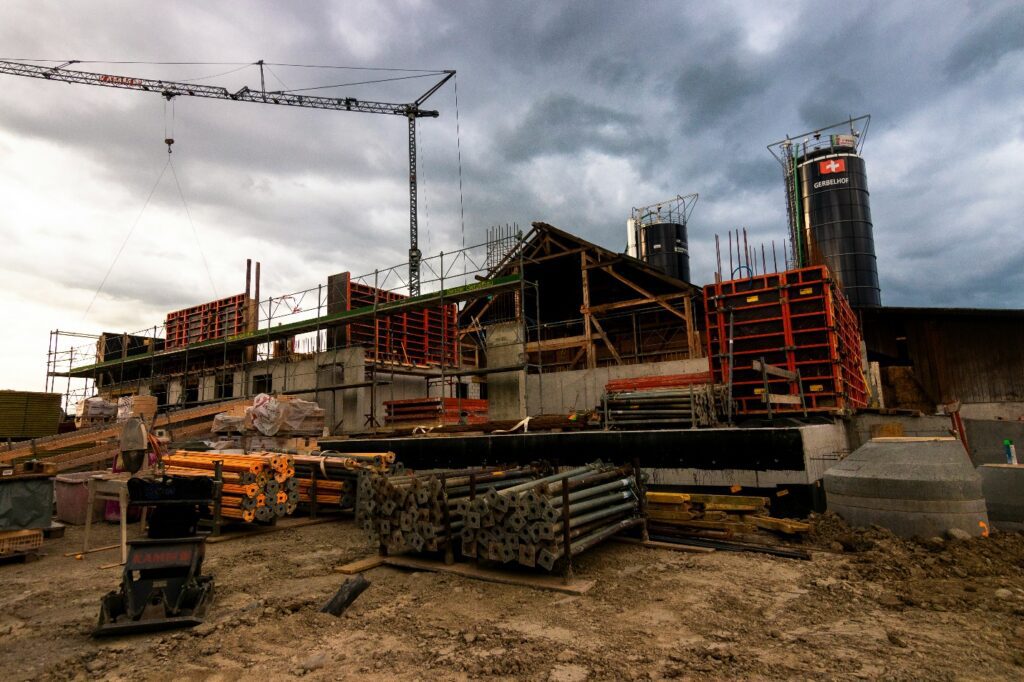If you’re planning to build a home or undertake a major real estate project in Miami, financing it with traditional loans may not be the most efficient path. That’s where construction loans come in. Unlike conventional mortgages that finance existing properties, construction loans are designed specifically for building from the ground up—or for major renovations that require staged funding.
Whether you’re a homeowner building your dream property or a real estate investor expanding your portfolio, understanding how new construction loans work is essential. This guide breaks down the process, structure, eligibility, and benefits of these loans—so you can build smarter and faster.
What Are Construction Loans?
Construction loans are short-term loans used to cover the cost of building or substantially renovating a residential or commercial property. Rather than receiving a lump sum upfront, borrowers receive funds in increments—called “draws”—based on the progress of the construction.
Unlike traditional mortgage loans, construction loans are riskier for lenders because there’s no completed asset at the time of financing. For this reason, they typically have higher interest rates, shorter terms, and more stringent approval requirements.
How Do New Construction Loans Work?
A new construction loan follows a very different structure compared to regular home financing. Here’s a step-by-step overview of how the process typically works:
1. Loan Application and Approval
To apply, you’ll need:
- Detailed construction plans
- A licensed contractor or builder
- A well-structured budget
- Project timeline
- Personal financial documents (credit score, income verification, etc.)
The lender evaluates your creditworthiness as well as the project’s feasibility before approving the construction loan.
2. Loan Disbursement in Phases
Once approved, the funds aren’t disbursed all at once. Instead, they’re distributed in draws tied to specific milestones in the construction process—foundation, framing, roofing, interior, and final inspection. The lender may conduct site visits before each draw is released.
This incremental funding ensures the money is being used as intended and helps prevent misuse or overspending.
3. Interest-Only Payments During Construction
During the construction phase, borrowers usually only pay interest on the amount drawn, not the full loan. This makes construction loans more manageable in the early stages when expenses are staggered.
4. Loan Conversion or Payoff
When the project is completed, the borrower either pays off the new construction loan or refinances it into a long-term mortgage. This process is known as construction-to-permanent financing.
Types of Construction Loans

Depending on your needs, several loan options are available:
1. Construction-to-Permanent Loan
This loan converts into a standard mortgage once construction is complete. It’s ideal for homeowners who want a seamless financing experience. You only go through the approval and closing process once.
2. Construction-Only Loan
This is a short-term loan that must be paid off or refinanced at the end of construction. It offers more flexibility but involves two closings—and potentially two sets of fees.
3. Owner-Builder Construction Loan
If you’re a licensed contractor and plan to manage the construction yourself, this type of loan allows you to act as your own builder. However, it’s harder to qualify for due to the risks involved.
4. Renovation Loan
Used for large-scale property renovations that need staged payments, similar to how new construction loans operate. These loans are especially popular among investors in markets like Miami, where older homes often require significant upgrades.
Construction Loan Requirements
To qualify for construction loans, borrowers generally need:
- A credit score of 680 or higher
- A debt-to-income ratio below 45%
- A down paymentof 20%–30%
- A licensed and insured builder
- Detailed plans, blueprints, and project budget
- Appraisal based on the projected completed value
The documentation must prove that the project is feasible, well-planned, and within budget.
Key Benefits of Construction Loans
Here’s why many investors and builders in Miami prefer construction loans over other financing types:
- Tailored Funding:You only borrow what you need as you build, reducing upfront debt.
- Project Control:Funds are tied to specific project stages, ensuring discipline and proper use.
- Custom Builds:Enables you to design and build to your exact specifications.
- Streamlined Transition:Construction-to-permanent loans allow you to switch to a traditional mortgage seamlessly.
Potential Drawbacks to Watch Out For
Despite their advantages, new construction loans come with certain challenges:
- Higher Rates:Interest rates are generally higher than standard mortgages.
- Strict Oversight:Lenders require inspections and paperwork at each draw stage.
- Shorter Terms:You typically have 12 to 18 months to complete the build.
- More Documentation:The application process is more involved and detailed.
However, these factors exist to mitigate the higher risks involved in lending for a property that doesn’t yet exist.
How Construction Loans Work in Miami

In a market like Miami, where property values are high and demand is strong, construction loans are widely used by developers, investors, and custom home builders. Miami’s real estate growth makes it a favorable location for ground-up construction and major renovations.
That said, the permitting and approval processes in Miami can be time-consuming. Having a lender familiar with the local regulatory landscape—who can work closely with you and your contractor—is critical.
If you’re planning to break ground in Miami, aligning your construction schedule with draw releases and loan timelines will help avoid costly delays and keep your project moving smoothly.
Tips for Managing Your Construction Loan Effectively
To make the most of your new construction loan, keep these tips in mind:
- Hire Experienced Builders:Lenders often evaluate builder credentials during loan approval.
- Track Expenses Closely:Stick to your budget and maintain a clear record of spending.
- Stay Ahead of Permits and Inspections:Delays can hold up draw disbursements and extend your loan term.
- Communicate with Your Lender:Update them on progress and anticipated changes to avoid surprises.
- Plan for Interest Payments:Even during construction, interest accrues—so budget accordingly.
FAQs About Construction Loans
Q: How long does it take to get approved for a construction loan?
Approval can take anywhere from 2 to 4 weeks, depending on the complexity of your project and the lender’s requirements.
Q: Can I use land as equity for a down payment?
Yes, if you already own the land, its value can be applied toward your down payment.
Q: What happens if the project goes over budget?
You’ll be responsible for covering additional costs. That’s why a contingency reserve (usually 10%) is recommended.
Q: Are construction loans available for commercial properties?
Yes, many lenders offer construction loans for multi-unit and commercial development projects.
Let’s Build Together—Insula Capital Group Has Your Back

At Insula Capital Group, we specialize in helping borrowers turn blueprints into buildings. Whether you’re starting from scratch or taking on a major renovation in Miami, our team is here to walk you through every step of the process.
We offer flexible new construction loans and construction loans that are designed to support your project from day one to final inspection. With fast approvals, milestone-based funding, and a client-first approach, we take pride in providing funding that’s built around your timeline—not the other way around.
From local insights to reliable draw schedules, we’re here to help you build smarter and more confidently.
Ready to get started? Contact us today.




